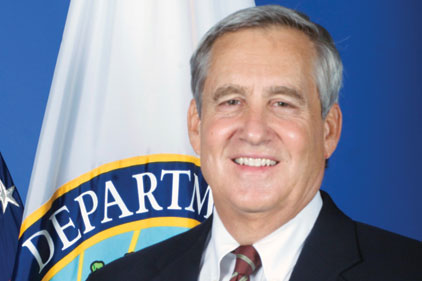There are five basic tenets that can mitigate risk in K-12 schools across the U.S., says David Esquith, Director, Office of Safe and Healthy Students for the U.S. Department of Education. Those tenets are:
1. Involve an all-hazards approach using prevention, preparedness, response and recovery.
2. Each school should do its own vulnerability assessment, identifying those areas of risk specific to the school.
3. All plans should involve all persons, including persons with disabilities.
4. All plans should involve the National Incident Management System.
5. There should be regular practices in emergency response.
“In regards to school security, we suggest that there should be a comprehensive approach to dealing with issues of school security and that no one particular tool or approach will be, alone, the sole solution,” he says. Read more about Esquith’s thoughts about security in K-12 schools, especially a school’s “climate.”
What trends are you seeing in school security?
The trend that we’re seeing in terms of disruptive or violent behaviors in school is that they are decreasing, and that school crime – including violent crime and serious violent crime – has decreased by more than 15 percent since 1992. We’re encouraged that overall violent crime has decreased significantly.
Is anything on the rise?
The data does not indicate any violent crimes are on the rise – even the percentage of students who carry a weapon to school has remained fairly consistent over the past 12 or 13 years. So, for example, in 2009, 17.5 percent of students grades 9-12 said they carried a weapon to school at least one day during the last 30 days. In 1997, that percentage was 18.3 percent. It’s been flat-lined.
There have been several incidents of bullying in the national news, including New Jersey’s strict new anti-bullying law. How are schools reacting to these events?
Incidents of bullying and individuals witnessing bullying is a significant problem. We have an excellent website in collaboration with the U.S. Department of Health and Human Services, called StopBullying.gov, and schools can find some useful information there. It helps parents, students and teachers to prevent and respond to bullying. We want to promote prevention just as much as intervention.
How should school staff be trained to react to these types of incidents?
We are working with school systems to prevent disruptive behaviors and reacting positively when it occurs. One of the programs that the Department of Education has invested in for a number of years is Positive Behavior Intervention Supports (PBIS). It promotes the idea that everyone in the school – all teachers, students and staff – are involved in all settings to clearly articulate what the expected behavior is and then give instruction for that behavior. When that’s done with fidelity and used as a best practice to resolve these issues, the results are quite impressive. Visit PBIS.org for more information.
How did you get involved with the Department of Education?
I’ve been with the Department of Education for close to 24 years. I began my career as a special education teacher, and I also worked as a lobbyist for the Association of Retarded Citizens. I worked for a Congressional committee for a while. And, then at one point in my career, I decided I would enjoy work in the Department.
What will your greatest challenge be this year?
We have to ensure that the initiatives we’re promoting are evidence-based and effective. I think the issue of school climate, especially for us working with behaviors resulting in disciplinary action, stands out at this point. We are trying to help prevent the behaviors that are resulting in disciplinary action. We assist schools to be in a preventive mode and less of a reactive mode so that students don’t end up being disciplined and reduce the behaviors that result in discipline. In the latter, we’re assisting them to intervene, when they have to, in a positive way that keeps kids in school and addresses the needs that they have so they can engage the academic environment as positively as possible.
What steps can school officials take to adjust a school’s “climate?”
When I use the term “school climate,” I’m referring to all of the conditions that exist within a school or classroom. That can range from health issues to safety issues to behavior issues. That’s what our office focuses on in a broad way. PBIS applies to all students in all settings expressing behavioral expectations and providing instruction to meet those expectations. Four to five percent of students account for 70 percent of disciplinary action, generally, and those students need something individualized and intensive in order to address their needs.
Read more Security Talk online at SecurityMagazine.com/columns/SecurityTalk
This article was previously published in the print magazine as "All Hands on Deck."










